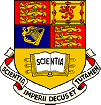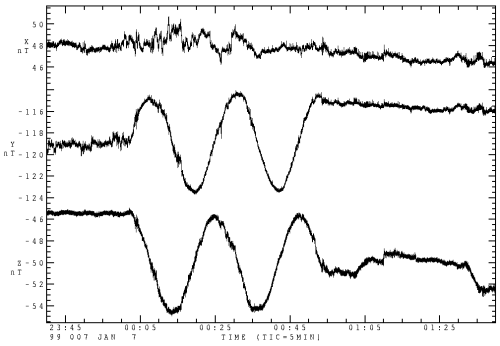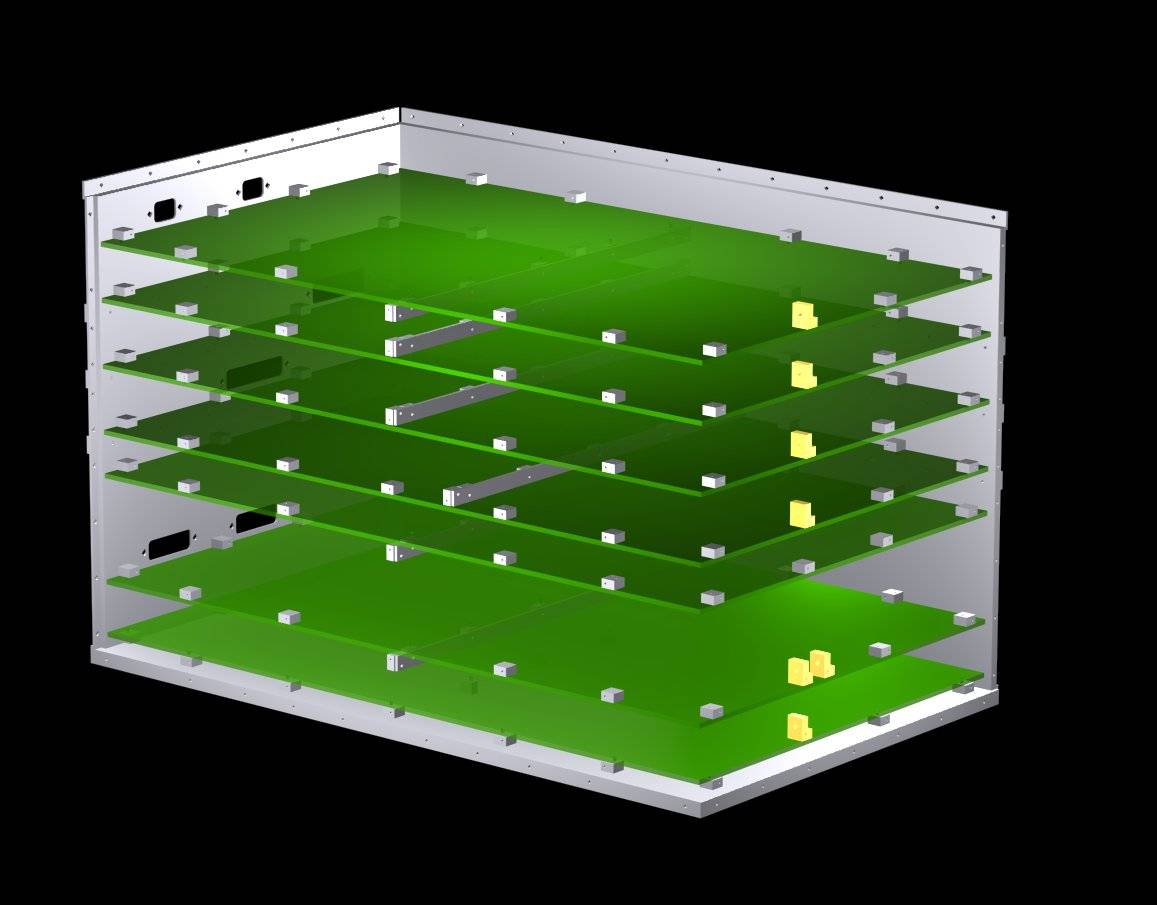
 |
|
News Page |

March 1999 |
This month's news stories:Cassini Magnetometer CheckoutGERB calibration Rosetta Progress Meeting |
 Cassini Magnetometer Checkout
Cassini Magnetometer CheckoutFrom December 28th to January 21st the Cassini operations team conducted a detailed checkout of all the onboard instruments. MAG, the magnetometer provided by a team led by ICSTM, was powered on for checkout on December 30th. In the next 24 hours, the Imperial College operations team – Steve Kellock and Rob White, supervised as more than 300 commands were sent to the instrument to exercise each of its modes and data formats. All commands executed perfectly and the instrument has been given a clean bill of health with which to continue the mission.
MAG is very sensitive to the small magnetic fields produced by the other instruments on the spacecraft, thus, once our checkout was completed, we stayed on to monitor the other checkout activities. The data collected will take some time to analyse completely but we already know that we do see disturbances from several of the instruments. However, the Magnetometer Boom is still retracted so the sensors are much closer to the spacecraft than they will be after deployment of the 11 metre boom, once this has been done any disturbances should be very small indeed.
MAG was finally turned off on January 19th having taken measurements for 20 days in total. Once during this time the spacecraft, which is normally 3-axis stabilised, was rotated about one axis for checkout of the plasma instruments. The affects of this roll on the data from the FGM sensor can be seen in the plot. From data like these we can assess how much of the measured magnetic field is from the spacecraft (stays in place as the spacecraft rolls) and how much is from external sources (rolls around the sensor).
The instrument will remain off now, except for a short maintenance activity in 3 months time, until it is powered on in preparation for a flyby of Venus in June this year. Shortly afterwards, in August, the magnetometer boom will be deployed and measurements will be made as the spacecraft swings by Earth and flies out down the Magnetotail.
In February, IC was one of two remote sites which participated in a NASA-wide test to demonstrate that their spacecraft can be operated in the year 2000. All ground hardware and software was set up to run with a clock time one year in the future, real-time Cassini telemetry data was taken and commands prepared and radiated. The test, which ran until late in the night UK time, was a complete success.
Steve Kellock 1st March 1999
GERB CalibrationOn January 20th the GERB instrument was brought to ICSTM for calibration in the Earth Observation Characterisation Facility (EOCF). For five days Steve Kellock, Ray Wrigley, Justin Ashmall, Neil Foster worked shifts to keep the instrument running 24 hours per day. The calibration facility contains a visible source and cold and warm blackbodies, these are used to characterise the performance of the instrument. GERB is a broadband imaging instrument, a series of measurements were taken which will give, for the first time, its prime performance parameters and yielded some impressive images of each of the sources, examples of which are shown on the right and described below. This was the second of three calibration sessions planned for the instrument – the first was in December last year. These first two sessions are mainly to exercise and refine procedures and equipment. The instrument at this stage is flight-like but does not contain flight versions of all of its component parts. After the calibration session it was returned to RAL, who do the assembly of the instrument, and from there went on to the European Space Research and Technology Centre ESTEC for EMC testing. After return to RAL for final assembly with all flight parts it will be delivered once again to Imperial College, on March 8th, for the full flight model calibration. Images Obtained with GERB at IC, 20th - 25th Jan 1999All images are rotated by 90° so that the vacuum chamber vertical axis is across the page. They are obtained by scanning the instrument 18° vertical field of view horizontally across each source in 1° steps. The horizontal axis in each image contains the 256 pixels of the linear detector array, the vertical axis of the image is time so that each new line contains a new output from the detector as the instrument is being rotated in front of the source The dark vertical bands are caused by detector pixels that are not functioning correctly in this non-flight detector. The darker right hand side of each image is caused by the fact the on this side of the detector only every other pixel is connected – again this is a non-flight configuration. (1) Image of the upper portion of the Warm Blackbody (WBB) showing the rectangular shroud aperture with the warmer WBB flange behind. The WBB flange becomes warmer towards the centre and the WBB aperture itself is within the white spot centred in the shroud aperture. The dark patches on the flange are bolt holes. The vertical stripes are bad pixels on this detector, the darker right half of the image is caused by missing data from every other pixel due to a missing ASIC in the front end electronics. (2) Image of the Cold Blackbody (CBB) showing the rectangular aperture in the -28 degC shroud, patches of the warmer chamber wall (approx 18 degC) showing in the corners of the aperture, and the CBB at 77K as the dark spot in the centre of the aperture. (3) Image of the Visible Calibration Source (VISCS), showing the rectangular shroud aperture (in grey) and structure on the flange surrounding the VISCS optical window. Steve Kellock 1st March 1999 |
   |
 Rosetta Plasma Interface Unit: Progress Meeting held in ESTEC
Rosetta Plasma Interface Unit: Progress Meeting held in ESTECAt a Progress Meeting held at the end of February in the European Space Technology Centre (ESTEC) in Noordwijk, the Netherlands, the Imperial College Rosetta team was represented by Chris Gee-Yin Lee to present our progress in the design of the Plasma Interface Unit (PIU), the heart of a five-sensor group of instruments designed to measure the plasma environment of a comet. This meeting was an important milestone, intended to take stock of the status of the complex set of instruments which make up the Rosetta Plasma Consortium. The Imperial College team (Chris Carr, Chris Lee, Trevor Beek and Andre Balogh) is responsible for the provision of the central Data Processor Unit, the Spacecraft Interface, the Digital Links to the five sensors, and the Power Supply and Management Units of the whole Plasma Consortium Package. Chris Carr, PIU Technical Manager said that the schedule to develop the instrument is a real challenge, with the Structural Thermal Model of the instrument to be delivered this summer, and with the electrical integration of the whole instrument scheduled shortly afterwards.
Good progress is nevertheless being made on all fronts. This includes the electronics box design and manufacture in the Physics Department's Mechanical Workshop. A cutaway computer diagram of the box is shown in the illustration.
About Rosetta: A rendezvous with Comet Wirtanen is the destination of ESA's Rosetta mission. Comets are believed to be the most primitive objects in the Solar System, and are particularly interesting to scientists because they hold many clues about our Sun and its planets. Rosetta will study the fabric of the comet and land a small probe (Rosetta Lander) on its surface. The data expected from Rosetta will provide a vital insight into the origins of the Solar System itself.
André Balogh 3rd march 1999
View last month's news or return to Space and Atmospheric Physics home page